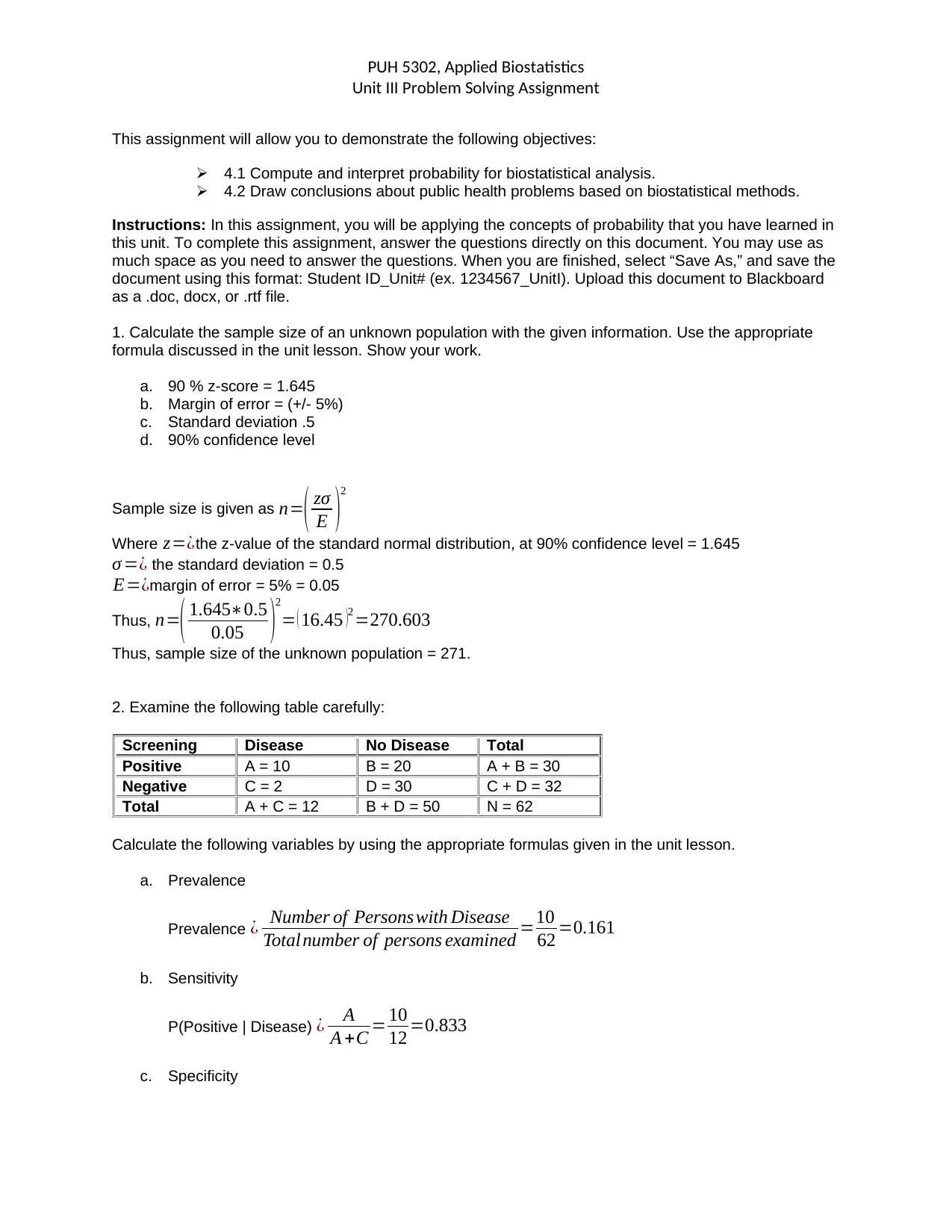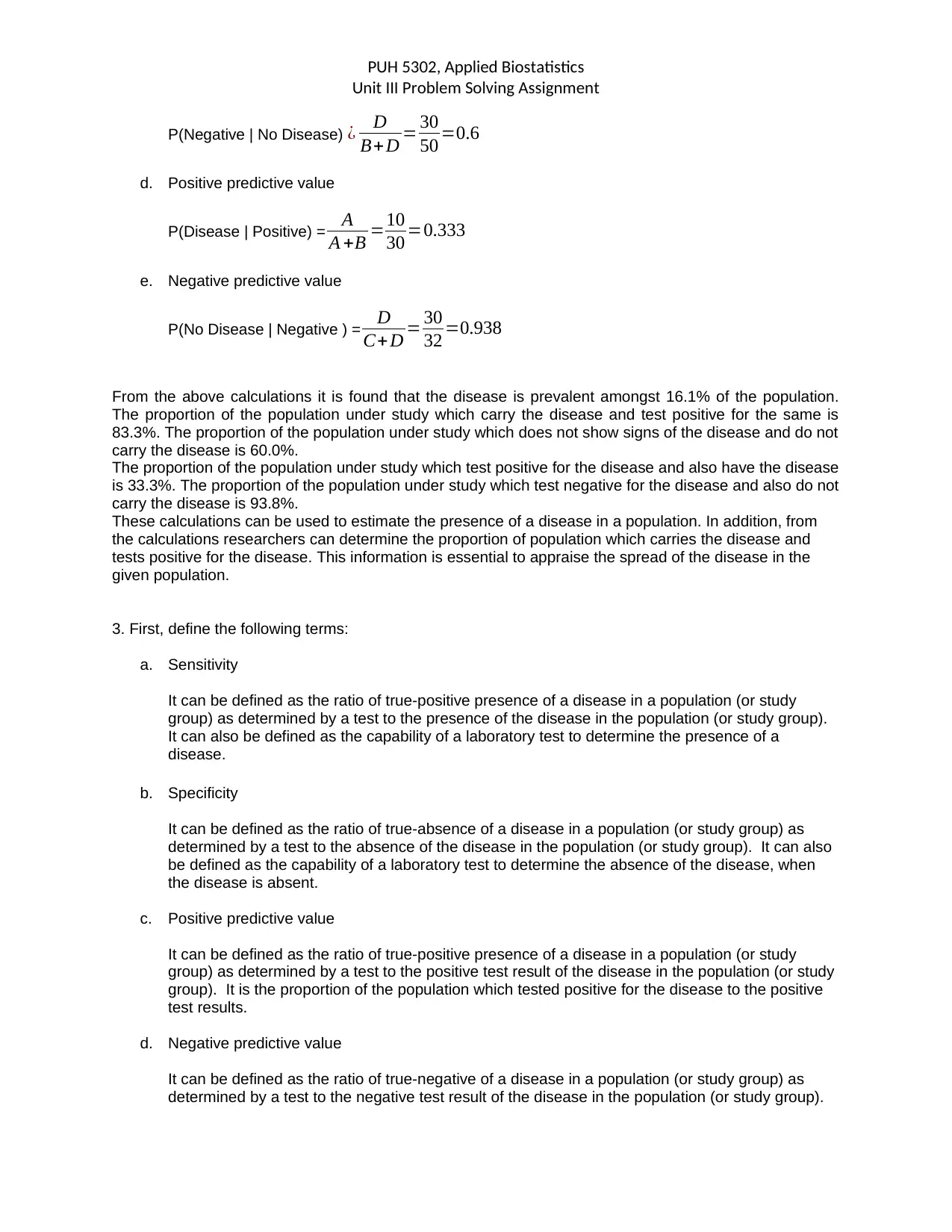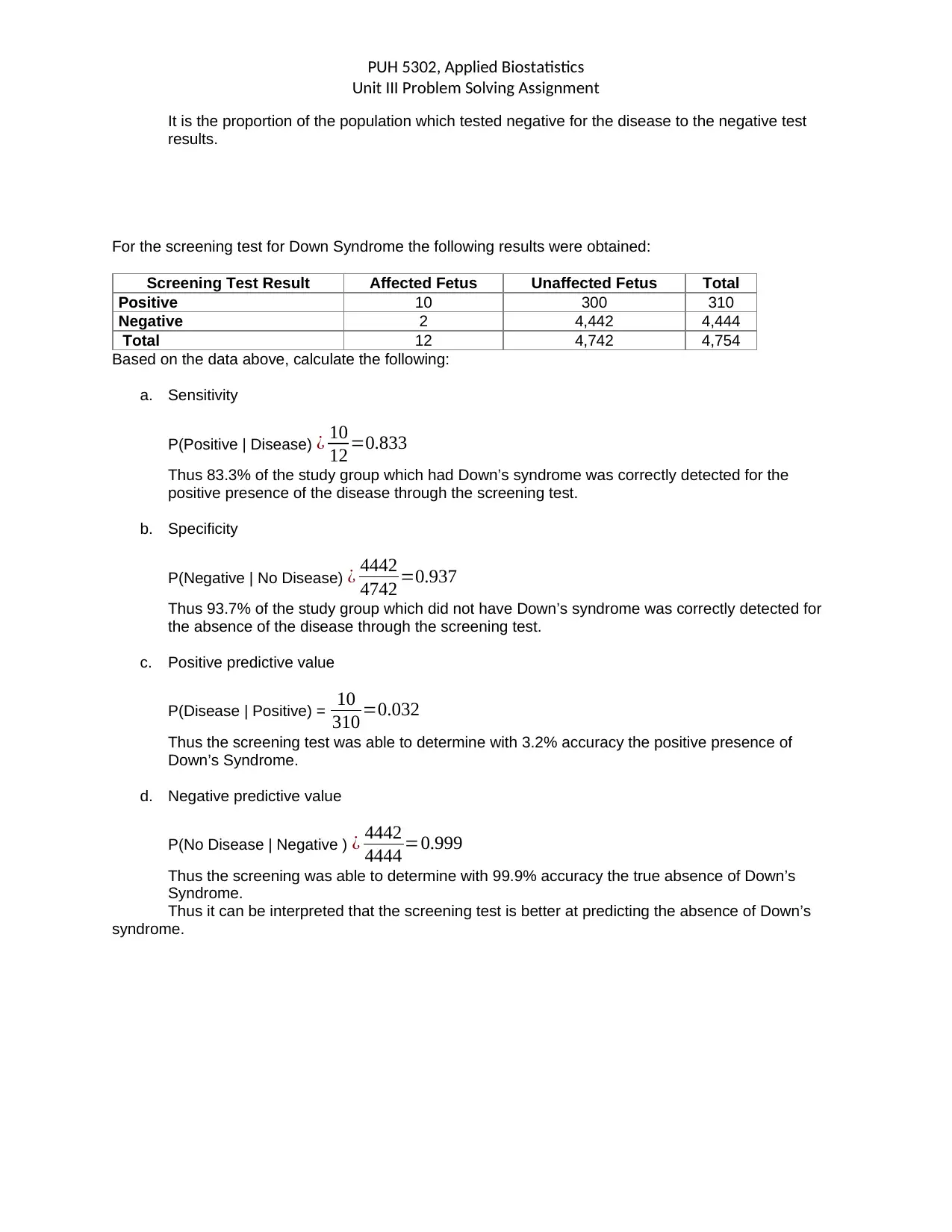PUH 5302, Applied Biostatistics Unit III Problem Solving Assignment
VerifiedAdded on 2022/11/29
|3
|966
|468
Homework Assignment
AI Summary
This document presents the solutions to a PUH 5302 Applied Biostatistics Unit III problem-solving assignment. The assignment focuses on applying probability concepts in biostatistical analysis and drawing conclusions about public health problems. The solutions include the calculation of sample size for an unknown population using a given formula, demonstrating the application of z-scores, margin of error, and standard deviation. The assignment also involves the analysis of a contingency table to calculate and interpret prevalence, sensitivity, specificity, positive predictive value, and negative predictive value. These calculations are used to assess the presence and spread of a disease within a population. Furthermore, the assignment requires the definition of key terms like sensitivity, specificity, positive predictive value, and negative predictive value, and the application of these concepts to analyze the results of a screening test for Down Syndrome, calculating and interpreting the same parameters to evaluate the test's accuracy in predicting the presence or absence of the condition. The document provides detailed calculations and interpretations to illustrate the application of biostatistical methods.
1 out of 3









![[object Object]](/_next/static/media/star-bottom.7253800d.svg)